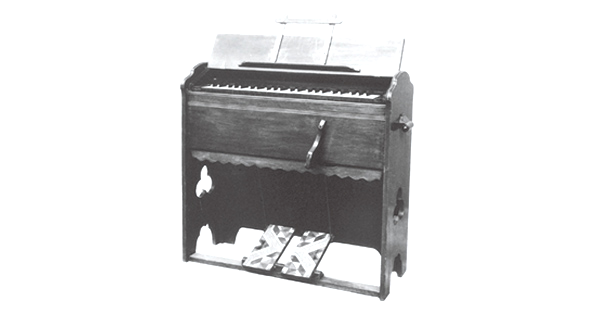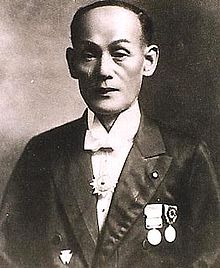History of Yamaha Corporation
- Written by Administrator
- Parent Category: Blog
- Category: It Is Interesting To Know

For some, the epitome of the world famous Yamaha brand is motorcycles, jet skis, scooters and snowmobiles. Others primarily imagine pianos, arranger keyboards, synths, guitars, or modern drum sets. For the third, Yamaha is associated with digital music ...
Starting of the brand
Did you know that the history of Yamaha Corporation began with the production of musical instruments ? In the 1887, founder of YAMAHA CORPORATION Torakusu Yamaha, designed his first reed organ.


Torakusu was from the family of an astronomers, and from childhood he loved to watch his father’s work very carefully, improving the ability to work with hands, studied watchmaking in Nagasaki, was engaged in the repair of medical equipment. Accepting a random order to repair reed organ, it was his first step, and he had a brilliant idea to found the yamaha's brand.
However, Torakusu Yamaha was dissatisfied with the poor tuning of the organ, and he began to study the theory of music, tuning, and after four months of hard work was able to successfully complete the repair. Then, Torakusu Yamaha decided to establish an industrial production of musical instruments, made of high-quality wood, supplied in abundance from the Temryu Valley to Hamamatsu.
In 1892, an order was executed to export 78 organs to Southeast Asia. And on October 12, 1897, Nippon Gakki Co. appeared in Kyushu Province, which means Japanese musical instruments.
Thorakusu Yamaha became its first president. In his honor, in commemoration of the centenary of the company in 1987, the company was renamed and became known as Yamaha. It was the first company in Japan to produce western musical instruments.
Yamaha Grand Piano
The Japanese Ministry of Education, interested in developing ties with the West, paid Torakusu Yamaha a trip to the United States in 1899 to study piano production in America.
In 1900, the company released the first piano in Japan, in 1902 - the grand piano, and in 1904 the Yamaha piano and organ won the Grand Prix at the international exhibition in St. Louis.
Until today, Yamaha musical instruments such as Grand Pianos, Organs, Synths, Arranger Keyboards etc.. are one of the best and of course, Leading musicians of the world prefer musical instruments of Yamaha. Instruments of Yamaha, sounds at the most prestigious international competitions, festivals, etc...
Sviatoslav Richter, USSR pianist of Russian-German origin, who is generally regarded as one of the greatest pianists of the 20th century, said that only “a truly grand piano ... allows you to express deep emotions in front of an audience. It is YAMAHA that creates such pianos. They have an incredible mixture of emotions, responsiveness and technical excellence.
Do you Know ?

The famous Yamaha CFIIIS concert grand piano was developed with the participation of Sviatoslav Richter.
Company development by Kaichi Kawak
In 1914, due to reduced sales of German harmonics, Yamaha created its harmonica and begans to export it. In 1920, the company employed about 1,000 people, the company produced 10,000 organs and 1,200 pianos a year. In 1922, a fire destroyed the factories in Hamamatsu and Nakasawa, the Tokyo office of the company suffered from the earthquake the following year, and it was close to bankruptcy. But in 1927, the management of the company was entrusted to the talented manager Kaiichi Kawakami, he reorganized the campaign, reduced the price of products, and paid half of the company's debts within 18 months. He worked hard to improve the quality of instruments and in 1930 opened an acoustic laboratory and a research center, and also hired specialists from the famous German brand Bechstein. Under the control of Kawak, inexpensive accordions and guitars were introduced to the market.
Postwar production development
During World War II, the production of musical instruments was temporarily suspended. However, after the war, thanks to financial assistance from the USA, the production of harmonics and xylophones was restored within two months after receiving the funds. Six months were required to restore organs, accordions, pipes and guitars. Since 1947, the export of harmonics has been resumed. The company began to manufacture metal frames for the piano, and the production of the piano was restored within three years. In 1947, the first sound phonograph was produced.
Yamaha Music School
Since 1948, music education in children has been compulsory in Japanese schools. This gives a new impetus to Yamaha's business development. In 1954, Yamaha music schools opened, they are engaged in the popularization of music. For different age groups of children, including young children, their own methods are being developed. 10 years later, in 1964, the first Yamaha music school appears in the United States. This is preceded by the opening of its representative office in Los Angeles. Now the musical education system for children and adolescents YAMAHA MUSIC SCHOOL exists in many countries around the world.
Yamaha Music Foundation
In 1966, the Yamaha Music Foundation was founded. He holds international competitions Junior Original Concert, the first such concert was held in 1971 in Japan, in 1973 - in West Germany. This fund also hosts the Electone International Festival, which presents young talents who use the latest technology in their work. Yamaha's work on developing music education helps further business growth. The domestic market is growing rapidly: the number of piano sales increases from 24,000 in 1960 to 100,000 in 1966. Yamaha becomes the largest piano manufacturer in the world.
Expanding production and improving technology, 1970s
Yamaha leads the way in the development of new musical instrument concepts, for the first time ever creating a disc clavier, quiet pianos, quiet winds and percussion instruments in accordance with the increasing market demands. In 1973, Yamaha released the first model of the Silent series piano, which allows you to turn off the sound and listen to the performance in stereo headphones. Pianos Disclavier give the opportunity to use modern tuning options when working with works for piano, written in ancient times. GranTouch modern digital grand pianos combine the traditional keyboard of the instrument and its mechanics with electronic technology, which allows you to create an instrument of minimum size and weight, as well as mute the sound. In 2008, Yamaha Corporation acquired the world famous European piano brand Bösendorfer, famous for its unique classic sound.
Yamaha Synthesizers
In the 1980s, the company focused on the development of electronic and digital components. The Yamaha CS-80 synthesizer was produced from 1976 to 1979. This is one of the first polyphonic synthesizers, providing the musician with great opportunities for laying down sounds. The Greek composer Vangelis, who loved this particular synthesizer, compared it to a symphony orchestra. His famous album Bladerunner (Blade Runner) owes its sound to the CS-80 synthesizer.
Michael Jackson also recorded his Thriller album using this synthesizer. In 1983, the first DX7 FM digital synthesizer was released; it broke all records for synthesizer sales.
Yamaha - a global manufacturer
Today, Yamaha is the only company in the world that produces almost all musical instruments - keyboards, drums, winds, guitars, synthesizers, tone generators, samplers and more more... They are known for impeccable sound, reliability, ease of use and relatively low price. Yamaha also produces high-end professional sound equipment.
Logos
Yamaha logo - three crossed tuning forks enclosed in a circle, the color is purple. The name Yamaha itself is in an asymmetric font. To distinguish, the Yamaha Motor logo is red, the font is symmetrical. In 1898, the logo of the then created Nippon Gakki Co. a phoenix bird with a tuning fork in its beak was depicted. In 1927, the bird disappeared, but there were three tuning forks. Since then, three crossed tuning forks are always present in the logo and symbolize the three pillars of the company’s business - technology, production and sales. They also symbolize music, sound quality and at the same time dynamics of development. It was she who helped Yamaha very quickly gain worldwide recognition.
You Might Also Interested
- Happy Music Day! Congratulations
- Yamaha Genos v2.0 Comming In Winter 2019
- New YAMAHA PSR SX900 / SX700 Announced

